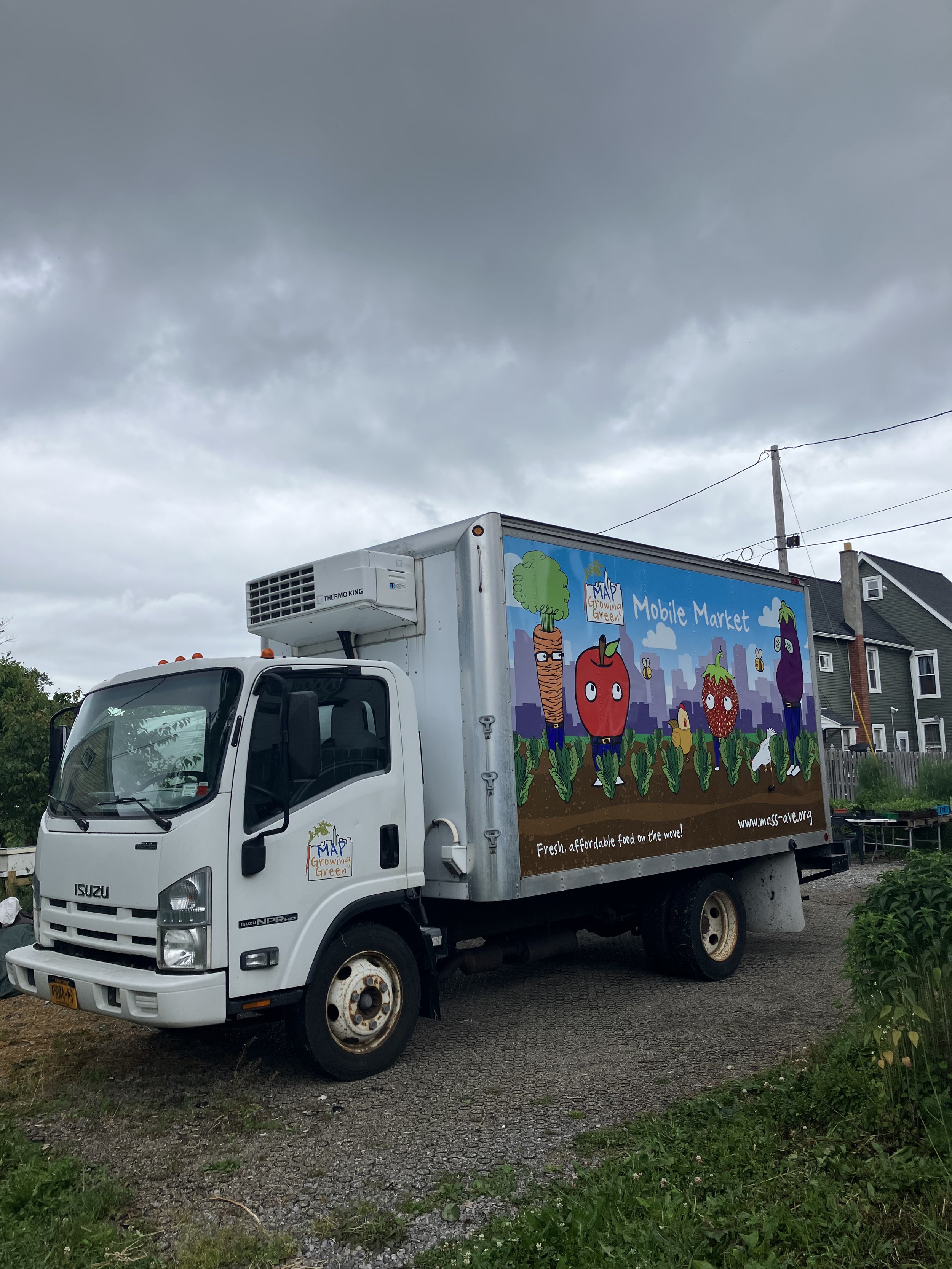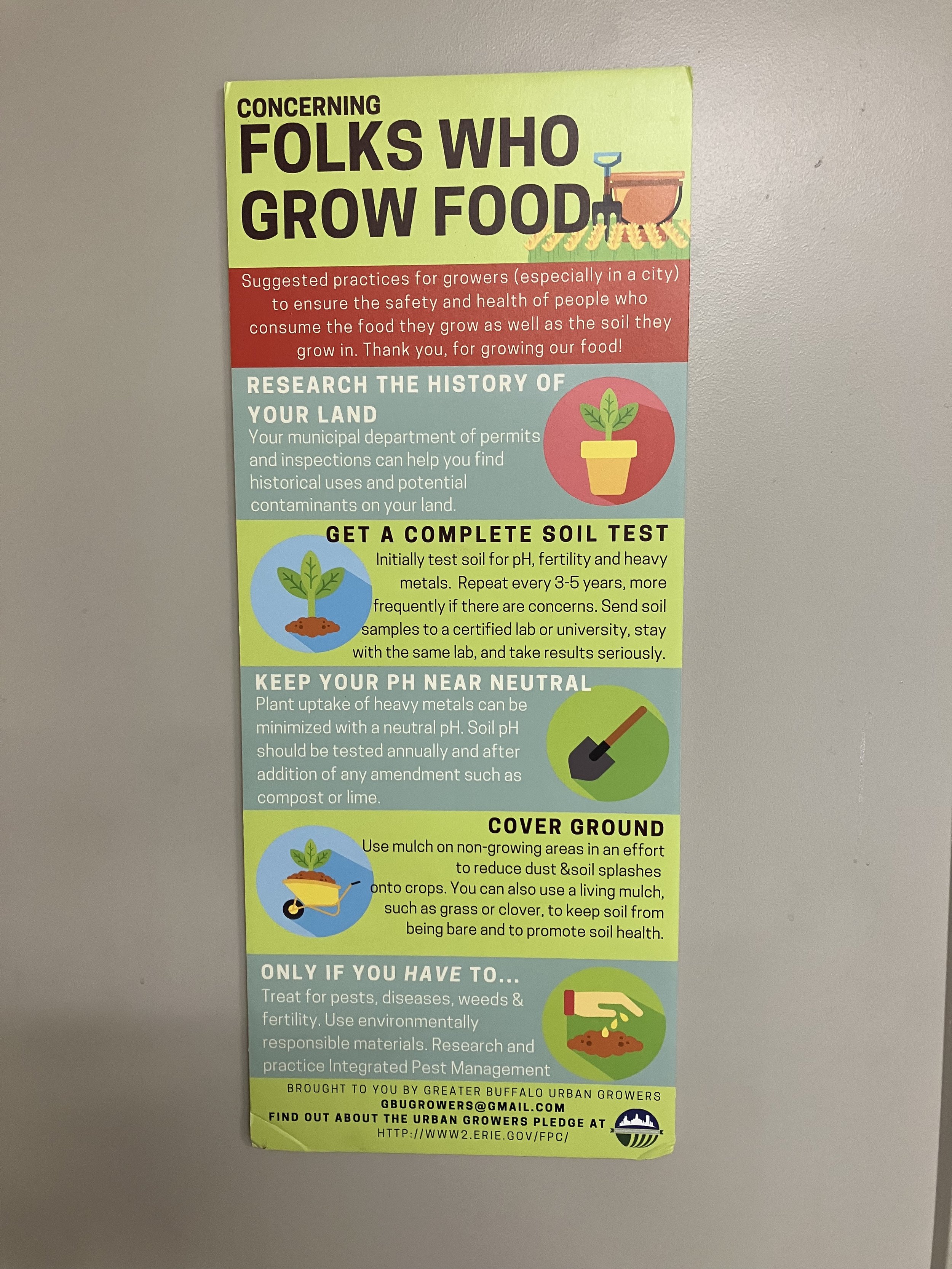Flowers of Buffalo: In Search of Eden
Flowers of Buffalo is a series exploring Buffalo, New York, from the grassroots to the flowers that bloom.
Dew on the Grassroots
I conduct policy research for the Cornell University School of Industrial and Labor Relations. I’m located at the University’s extension office in Buffalo, called the Buffalo Co-Lab.
Among other programs, my office oversees an undergraduate summer fellowship called the High Road Fellowship, in which students from the campus in Ithaca spend eight weeks in Buffalo, NY, working with elected officials and community advocates on policies and program initiatives that seek equitable solutions to problems in the Buffalo political economy.
On Fridays during the summer program, Fellows meet with Buffalo practitioners and local leaders as well as visit sites in the city where people are engaged in social and political activities. These days the Fellows are like dew on Buffalo’s grassroots.
On Friday, June 23, I joined the Fellows on two tours, one of the People United for Sustainable Housing (PUSH-Buffalo) Green Economic Development Zone and another of an urban farm administered by Massachusetts Avenue Project (MAP).
On both tours, I was chasing flowers with my phone – I’m obsessed. But I found much more than flower pictures. I found myself on the grassroots, too, a drop of dew shimmering in sight of Eden.
Inspiration
Barbara Cole is one of the leaders of Just Buffalo Literary Center (JBLC), a community-based organization which promotes reading, writing, and the literary arts, and on Thursday, June 22, I heard her discuss the idea of inspiration in connection with a public art dedication at the Buffalo and Erie County Public Library Main Branch. She emphasized two meanings for the word, first, inspiration as stimulation and, second, inspiration as inhalation of air. Inspiration not only triggers creativity, but it also sustains life itself. This is what public art does for civil society, Cole intimated.
I believe housing and food activists may stimulate improvements in the Buffalo political economy similarly. On Friday, I was inspired by the creative efforts of local activist organizations to improve Buffalo by providing sustainable access to safe, affordable housing and healthy food resources. PUSH-Buffalo, for example, builds, manages, maintains, repairs, renovates, and advocates for affordable housing in Buffalo.
The Green Economic Development Zone shows their theory of change in action. PUSH-Buffalo envisions housing that is affordable not only because the rent is below market rate but also because utility costs are reduced by structural improvements like solar panels and weatherization technologies which generate renewable energy and regulate household temperatures (even sustaining heat in the long western New York winters).
Our Friday tour guide, Amun Ra, directs development projects for PUSH-Buffalo, and showed us new and renovated houses that PUSH-Buffalo manages in a pocket of the 5 Points neighborhood on Buffalo’s west side. Some houses were purchased in complete disrepair, then, in Ra’s words, they were “stripped down to the studs” to make improvements. Now these houses offer rental units which charge below market rents and promise lower utility costs due to renewable energy sources and weather adaptive materials added to the structures. Other houses that we saw were built “from scratch.” In these cases, PUSH-Buffalo bought the vacant lots from the City of Buffalo landbank and built new houses with climate responsive materials for energy efficiency.
In renovating and building housing units, PUSH-Buffalo is responding to requests from members and west side neighbors for more affordable places to live. The Green Economic Development Zone is a breath of fresh air that offers Buffalo residents safe, modern housing with lower rent and utility costs than housing in adjacent neighborhoods. Green, affordable housing helps sustain the city’s quality of life for everyday workers in Buffalo, where the rising costs of living have outpaced working class wages. How effective these strategies are over time should stimulate further discussion and study in the coming months and years.
Intergenerational Lattice
Laurie Dean Torrell is the director of JBLC, and she is retiring this year. Her longtime colleague Barbara Cole is incoming director. As a JBLC board member, I am inspired by the future, but I am also sad to see Laurie go. During her tenure, JBLC has thrived, blooming into one of the most successful community-based organizations in the city. For example, JBLC hosts the Babel Lecture Series every year, recruiting highly acclaimed authors from the US and abroad to speak to our city at Kleinhans Music Hall. Laurie was instrumental in making Babel the great Buffalo cultural event that it is.
On Friday, touring the urban farm at Massachusetts Avenue Project, I was reminded of an idea that Laurie talks about a lot: the intergenerational lattice. Sometimes people, events, and/or catalytic ideas can cut across generational barriers and, in fact, unify the generations in belief or experience. When multiple generations convene in a shared vision or collaborative activity, they operate on an intergenerational lattice. This unity across generations happens only rarely, and much of what Laurie has tried to do with JBLC, Babel, and literary arts more generally, is to make reading and writing an intergenerational lattice for all Buffalonians.
I’m all about lattices. These are structures comprised of intersecting metal or wooden strips, forming square- or diamond-shaped openings between the strips, typically supporting flowers and bushes which adorn the sides of homes. In the Bryant and 5 Points neighborhoods, flowers coil around lattices everywhere. Some of my favorite flower pictures are photos of roses bopping in the breeze, leaning out from a bush behind a lattice.
In addition to flower photos, I snapped images of an abundance of food growing at MAP’s urban farm in the middle of the west side. Our guide, Katherine Phofl, manages the farm, and she showed us crops of garlic, tomatoes, lettuce, okra, honey, and peanuts. They were growing chickens, too, and had dozens of eggs, chicken cutlets, and, yes, chicken liver pate available. If you like locally grown, healthy, and tasty, MAP’s urban farm is for you (me)!
During the tour, Pfohl explained that educating young people from the surrounding neighborhood about agriculture and the urban landscape has always been at the heart of the organization’s vision. Many young people in the neighborhood work on the farm; some have even returned, Pfohl said, to work for the organization’s administration.
What if a healthy appreciation for the land that we live on and the abundance of food and shelter it provides were elevated to the level of intergenerational lattice? At MAP, one might find an elderly volunteer, middle aged scientist, younger food activist, and teenage farm technician tilling the soil for the public good. Maybe the first step toward a shared vision of equity is growing food for the community on an urban farm.
Eden
On Thursday, June 23, the JBLC unveiled the “Spirit of Inspiration” monument, which was created by artist Olalekan Jeyifous and inspired by Lucille Clifton’s life and poetry. This JBLC gift to Buffalo stands outside the Main Branch Library in downtown Buffalo, marking one space where Buffalonians can find inspiration and, with good fortune, connect to an intergenerational lattice.
The High Road is another. My journey with the Fellows on Friday took me to the 5 Points neighborhood where PUSH-Buffalo and MAP are implementing innovative strategies to create affordable housing and healthy, locally grown food, respectively. Further, they are creators of new socioeconomic ideas and practices aimed at sustaining balance with the environment.
I’m reminded of a poem by Lucille Clifton, “The Garden of Delight,” which is about the many ways people imagine their paradise. For those of us who seek the public good, Eden, or paradise, is a safe society with living wage jobs, affordable housing, high achieving schools, and healthy food. Getting to Eden is the great test of our lives. I was delighted to study with PUSH-Buffalo and MAP last week.
BY LUCILLE CLIFTON
for some
it is stone
bare smooth
as a buttock
rounding
into the crevasse
of the world
for some
it is extravagant
water mouths wide
washing together
forever for some
it is fire
for some air
and for some
certain only of the syllables
it is the element they
search their lives for
eden
for them
it is a test



































